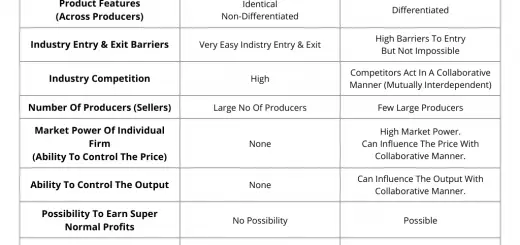Elasticity Coefficient Explanation | LearnBusinessConcepts
What is Price Elasticity?
In general terms, “elasticity” means the measure of a variable’s sensitivity to a shift in another variable. “Price elasticity” is the measure of the sensitivity to a change in demand or supply of a product with a change in the product price.
What is Elasticity Coefficient?
Elasticity Coefficient is the numeric value of the percentage variation in quantity demanded divided by the percentage change in the product price.
This is also known as the coefficient of price elasticity demand.
Elasticity Coefficient Formula

Elasticity Coefficient (Ed) = Percentage change in Quantity Demand of the Product / Percentage change in Price of the Product
Interpretation of Elasticity Coefficient
1) If Elasticity Coefficient is Equal to Zero (Ed = 0)
This means demand perfectly price inelastic. Demand is constant even though the price changes (increase or reduce). This is where the same quantity will be demanded regardless of the price.
In the elasticity coefficient formula, “the percentage change in quantity demand” will be zero, hence the equation results in zero (0).
2) If Elasticity Coefficient is Less than One (Ed < 1)
This means demand is price inelastic. Product price change has a relatively small effect on the quantity demanded. Reduction in price does not increase demand much, and an increase in price does not decrease demand much. There is less change in quantity demanded due to price fluctuation.
In the elasticity coefficient formula, “the percentage change in the price of the product” will be more than “the percentage change in quantity demand”, hence the equation results value less than 1 (between 0 to 1).
3) If Elasticity Coefficient is Equal to One (Ed = 1)
This means demand is unitary elastic. Product price change has an equal effect on the change in quantity demanded. Reduction in price equally increases the demand, and an increase in price equally falls demand.
In the elasticity coefficient formula, “the percentage change in the price of the product” will be equal to “the percentage change in quantity demand”, hence the equation results in exactly 1.
4) If Elasticity Coefficient is More than One (Ed > 1)
This means demand is elastic. Product price change has a relatively large effect on the quantity demanded. Reduction in price raises the demand much, and an increase in price decreases demand much.
In the elasticity coefficient formula, “the percentage change in quantity demand” will be more than “the percentage change in the price of the product”, hence the equation results in more than 1.
5) If Elasticity Coefficient is Infinity (Ed = ∞)
This means demand perfectly price elastic. Product price change has an infinity change in quantity demand. Quantity demanded increases to infinity when the price decreases, quantity demanded decreases to zero when price increases.
Recommended Articles:
- Price Elasticity of Demand Explanation
- Types of Price Elasticity of Demand – Full Explanation
- Unitary Elastic Demand: Definition, Examples, Curve
- Inelastic Demand: Definition, Examples, Diagram
- Perfectly Elastic Demand: Explanation with Examples
- Difference Between Elastic Demand and Inelastic Demand
- Difference Between Unitary Elastic and Inelastic Demand


